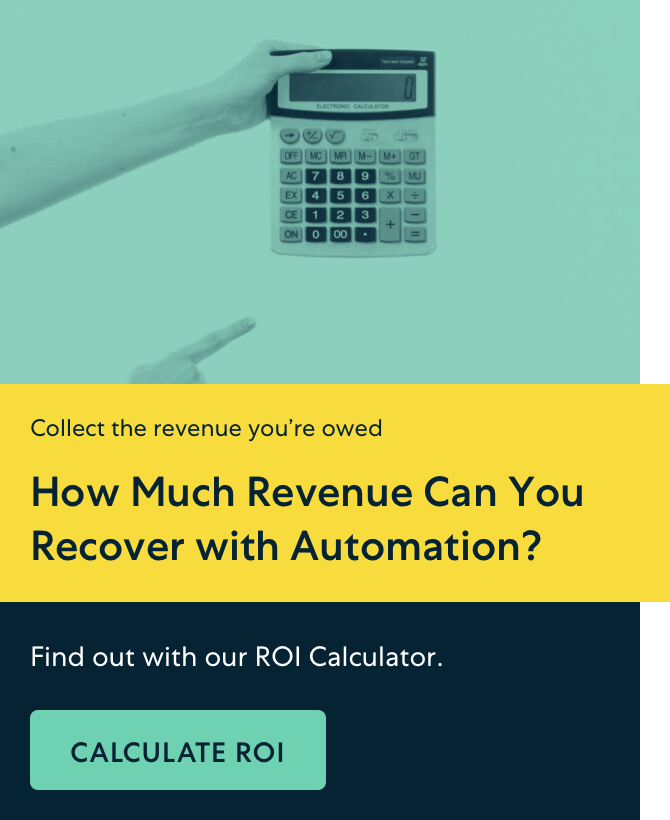There’s been much chatter about the Rule of 40 SaaS valuation in recent years and for good reason. As a straightforward SaaS metric used by investors to value software businesses, it’s no surprise that SaaS (Software as a Service) leaders are drawn to testing their own businesses against the rule and discussing its benefits and shortcomings.
While the allure of having a quick and dirty KPI that provides a world of insights into forecasting a company’s profitability is high, it does come with quite a few questions and considerations to take into account.
Can both large software companies and smaller startups use this rule of thumb? Does it accurately encapsulate the art of balancing long-term growth and performance? Is it possible that adhering to the Rule of 40 can contribute to the negative cycle of unsustainable growth?
In this article, we’ll discuss the Rule of 40—while also taking a look at the insights other leaders in the SaaS community have to share.
TL;DR
- The Rule of 40 SaaS valuation provides a high-level view of a SaaS or any software business’s health. If your percentages of growth rate and profit margin total at least 40 when added together, according to the theory, your business is in great health and could double in valuation.
- Opinions differ on when to start measuring the Rule of 40, but the consensus is clear: relying on it too early can create misunderstanding around a company’s profitability and value. For year-over-year comparisons, opinions also differ. While achieving a measure of 40 or above in a single year is not uncommon for successful businesses, maintaining the metric for multiple consecutive years has proven to be a rare feat, even for large companies.
- As with anything else, the Rule of 40 is just one metric for measuring a business’s health. To oversimplify and use it as a sole measure would be unwise, but it can be a great tool to have as you determine where your business stands as it grows.
Understanding the Rule of 40
The Rule of 40 provides a high-level view of a SaaS or any software business’s health. Put simply, if your percentages of growth rate and profit margin total at least 40 when added together, then your business is in great health and could double in valuation.
This rule suggests that a business with low or even negative profits can still be highly valued if it has a large enough growth rate as a counterbalance.
This situation is very common in rapid-growth startups looking to maximize customer acquisition and establish leadership in their niche.
The opposite can also be true for late-stage companies: slowed growth can signify valuable maturity if profits are high enough to satisfy the rule.
Which “percentages of growth rate and profit margin” should one use? While each business is unique, most thought leaders agree on using Monthly Recurring Revenue (MRR) or Annual Recurring Revenue (ARR) for growth rate. Combine the growth rate from either of those with the EBITDA (Earnings Before Interest, Taxes, Depreciation, and Amortization) margin for the same time period, and see if the product is at least 40.
Some businesses may find that using their free cash flow (FCF) margin or operating income instead of EBITDA margin works better for their situation.
Businesses may choose not to use EBITDA for a variety of reasons. In one common scenario, a business that is hosting its own software has to factor in the cost of equipment purchase, financing debt, or lease expenses to do so—using EBITDA margins would not be a good fit in this case. However, a business using a cloud infrastructure can expect its cost of goods sold to scale along with the business, so using EBITDA works just fine.
Once you know which values are right for you, simply add these two percentages together, and, voilà, you’ll know whether or not you’ve reached or surpassed the magical number 40. The calculation will look something like this:
Growth% + Profit% = x
If x is greater than 40, you’ve beat the Rule of 40.
Small SaaS businesses that are doing well tend to blow the Rule of 40 out of the water. This is because they are experiencing exponential growth early on, which will lead to later stabilization and success. Because of this, many in the SaaS industry have formed opinions about when it’s appropriate to start using the Rule of 40 as a metric—and that’s not the only topic being discussed.
The Rule of 40 SaaS valuation debates seem to center around four main areas:
- When to start measuring
- What time period to measure
- How to “beat” the rule
- The actual value of the Rule of 40.
When to Start Measuring
The Rule of 40 hit the SaaS industry’s radar when Brad Feld, investor, and founder of Techstars, published The Rule of 40% for a Healthy SaaS Company.
In his post, Feld shared the “rule” as described by a late-stage company investor. The rule was only used for software and SaaS companies with at least $50 million in revenue, but Feld argued that it worked just as well once a business hit $1 million.
Opinions differ on this point. For example, Tomasz Tunguz quickly responded to Feld’s article with some data crunching in The Data Behind the Rule of 40%. In it, he suggested that in the early days of a new business, applying the Rule of 40 formula may yield confusing results higher than 100%—even 189% in the case of Workday in 2010.
Tunguz implied that waiting until year 5 or 6, when a business is more likely to have reached $50 million in revenue, may be more prudent.
David Cohen, co-CEO at Techstars, agrees that using the Rule of 40 too early will yield unsustainable results, but also thinks that waiting to reach $50 million isn’t necessary. He suggests starting once around the $15-$20 million in revenue run bracket. Still others recommend waiting until your business has built out all the necessary departments for growth: research and development, sales and marketing, customer support, etc.
A final common recommendation is for startups to focus on the T2D3 approach before looking into the Rule of 40. Under T2D3, a business triples its revenue for two years in a row, then doubles it for three years in a row. After taking five years to achieve this, businesses should be ready to look at the Rule of 40 seriously.
Taking these many opinions into consideration, the consensus is clear: relying on the Rule of 40 too early can create misunderstanding around a company’s profitability and value.
Waiting until a business’s fifth year, after departmental build-out and reaching tens of millions in revenue, will yield a more accurate representation of potential for high valuation.
What Time Period to Measure
Once a business starts using the Rule of 40 SaaS valuation, another common question is what time period to measure. For many, the standard practice is to measure quarterly or year-to-date, but other methods have cropped up over time.
Cohen points out, for example, that while investors often give credit forward 12 months when evaluating a business with consistency, someone looking to acquire a business may only be interested in the previous 12 months. Because of this, when calculating your business’s position within the Rule of 40 for a buyer, it is more prudent to measure the last 12 months of revenue. Do not use Rule of 40 as a predictor for future valuation.
Opinions differ on whether to use the Rule of 40 to create year-over-year (YoY) comparisons. While achieving a measure of 40 or above in a single year is not uncommon for successful businesses, maintaining the metric for multiple consecutive years has proven to be a rare feat, even for large companies.
Fluctuations in the results of the formula can be due to any number of things, including business changes that will be positive long term. If you do choose to create YoY comparisons of your Rule of 40 results, be sure to interpret the result along with other metrics and indicators—never alone.
How to “Beat 40”
Of course, as soon as the Rule of 40 (R40) became well-known in the SaaS world, industry leaders wanted to know how to “beat” it.
This worries technology executive and investor Dave Kellogg. As he explains in “An Update on the SaaS Rule of 40”:
“My instinct at this point is that many companies target R40 compliance too early, sacrifice growth in the process, and hurt their valuations because they fail to deliver high growth and don’t get the assumed customer acquisition cost efficiencies built in the financial models, which end up, as one friend called them, spreadsheet-induced hallucinations.”
A post by the SaaS Capital blog agrees, pointing out that this metric isn’t right for everyone, and pushing to reach it “might not even be that productive if the market opportunity is not there.” Because every business is unique, the Rule of 40 could discourage startups from focusing on the large customer acquisition necessary to corner a market or push others into rushed product development that alienates their niche audience.
Startup investor Greg Sands takes a similar stance in his piece, “What the ‘Rule of 40’ Means at the Early Stage.” In his post, he reminds business owners that what good investors really value is an owner’s understanding of unit economics, the ability to analyze their business and explain tradeoffs, and the ability to be profitable.
Still, those who have passed the early business stages are persistent in their desire to learn how to make the Rule of 40 work for them. Fortunately, Bain & Company has a well-written breakdown of different scenarios that allow for the conquering of Rule 40 as a startup matures. These can be summarized as
- Keep revenue growth above 30%. This means that profit margins hover around 10% or lower, as long as the sum of the two is still 40% or more. This works best for startups trying to acquire customers at a rapid pace and disrupt their industry; immediate profits are sacrificed for expedited growth that claims a large portion of the market.
- Keep revenue growth between 10%-30%. This requires profit margins of at least 10%-30%, again, as long as the sum of the two values is 40% or more. It works better for large, established companies with a presence in adjacent markets and a history of adaptability. The balance of growth and revenue is a sign that a business is both profitable but also still growing at a sustainable pace.
- Keep revenue growth below 10%. This is another approach that works better for established companies. In this situation, profit margins are consistently high (30% or more) thanks to pricing power, leveraging scale, cross-selling, and/or expanding the customer base, etc. Beating the Rule of 40 in this situation is simply a matter of remaining a giant in your field.
Examples of the Rule of 40 SaaS Valuation
It’s not uncommon for SaaS companies to want to benchmark themselves to other businesses in their niche and see if they tick the Rule of 40. However, the information needed to calculate the Rule of 40 might be difficult to get as an outsider. To help explain the Rule of 40 better, let’s look at a few fictional examples, and then look at some publicly traded companies with easily-accessible data.
Let’s say you run an HR SaaS startup and have a net income margin of -40%, although you’re experiencing a YoY growth rate of 50%. While the growth rate is strong, when added together, you reach a calculation of just 10%, which means that venture capitalists could see the company as a poor investment.
If you run a CRM software company with a net income margin of -45% with a growth rate of 85%, the Rule of 40 calculation would be exactly 40%. Even though the net income margins are quite low, the current state of hypergrowth could make this startup a lucrative investment opportunity for many.
So what companies are actually beating the Rule of 40? Knowing for sure who’s doing it is difficult with private companies, but public SaaS companies must report on financial data which can be used to determine if they’ve achieved this rule of thumb. For example, sites like the Rule of 40 Index can be used to glean valuable insights into the growth-profitability balance of these companies.
Take Adobe for example: with a YoY revenue growth of 10.3% and an EBITDA margin of 39.2% (as of October 2023), the software giant reaches a total score of 49. Adobe is a SaaS company that regularly surpasses the Rule of 40, but how? By constantly developing new, valuable products since their inception in 1982, updating their payment and business model, and utilizing clever cross-selling and upselling techniques, companies like Adobe can strike the perfect balance (although it’s important to not become complacent).
Meanwhile, as of October 2023, Workday’s revenue growth is 16.3%, while its EBITDA margin is 6%, meaning it has a total score of 22, which doesn’t pass the rule of 40. However, as Thierry Depeyrot and Simon Heep from Bain & Company mention, Workday actually outperformed the Rule of 40 earlier, with revenue growth of over 30%.
As the authors said, Workday “was modestly profitable while investing in hypergrowth to build a large installed base, displace legacy vendors, and attain the holy grail of becoming a platform.” However, growth eventually does slow down, which means that mature companies like Workday have to find new ways to increase their net income and profit margins.
Remember: as long as the calculations total 40, according to the theory, your company will have struck the ideal balance between growth and profitability. However, not reaching the magical number of 40 in no way means the end. In a McKinsey & Company article by Paul Roche and Sid Tandon, they focus on how high-performing SaaS companies constantly are “adjusting their growth and free cash flow objectives according to where they are in their life cycle to stay at or above the Rule of 40.”
As opposed to the short-term “growth at all costs” mentality, truly successful SaaS businesses will require constant fine-tuning and iteration to determine what level of growth offers sustainability in the long run for your organization—whether it fully aligns with the Rule of 40 or not.
How Useful Is the Rule of 40, Really?
With so many investors and experts expressing concern about putting too much focus on the Rule of 40 SaaS valuation, it’s understandable that some ask where the boundaries of its usefulness lie.
After all, most SaaS companies that beat the Rule of 40 are larger and well-known, and investors know this. They may be more likely to see a startup business as having promise if it invests more energy and value in tracking customer acquisition, lifetime value, churn, and renewal rates.
Due to the nature of SaaS, the need to sacrifice profit for growth early on makes sense for many. As long as attention is on creating the “monopoly” required to expand into enterprise-level operations, revenue growth is the priority. For most startups, this means that the Rule of 40 takes a backseat to focus on more important things, like the acquisition, lifetime value, churn, and renewal rates listed above.
This doesn’t completely remove the Rule of 40 as a tool for startups, however. Bain & Company points out that the rule can be used in the early stages of business to assess the performance of business units or product families within an organization. Building the goal into business planning and performance assessments can be a great way to get started.
Getting in the habit of using the rule early on may lay a blueprint for success down the line when the metric really matters.
In an interesting expansion on using the Rule of 40, Jeremy Krasner at Stout came up with a Modified Rule of 40. In this rule, you include Research & Development (R&D) and Sales & Marketing (S&M) costs as a percentage of revenue in your Rule of 40 calculation. This allows for a tighter view and correlation to revenue multiples. Thus, the formula expands to look like this:
Revenue Growth% + Profit% + S&M% + R&D% = x
The same number applies here: 40 and over is good, while under 40 means there may be room for improvement. In this new version, however, a business is more likely to reach 40 with the newly added values. This version of the rule may be more appropriate for businesses that aren’t (yet) giants in their field and are trying to understand their value—since it’s currently rare for lesser-known names in the industry to beat the rule.
As with anything else, the Rule of 40 is just one metric for measuring a business’s health. To oversimplify and use it as a sole measure would be unwise, but it’s certainly a great tool to have as you determine where your business stands as it grows. It is a “rule” of thumb, a predictor—not a catch-all measurement. Use it as needed, but remember that the health and success of your business are never measured by just one metric.
FAQs about Rule 40
Q: What is the Rule of 40 in SaaS valuation?
The Rule of 40 is a guiding principle in valuing Software as a Service (SaaS) businesses. The rule states that if the combined percentages of a company’s growth rate and profit margin are at least 40, the company is considered financially healthy.
Q: How is the Rule of 40 calculated?
The Rule of 40 is calculated by adding a company’s profit margin percentage to its growth rate. If the total is 40 or higher, the company is considered to follow the Rule of 40.
Q: What is a good Rule of 40 score?
According to the Rule of 40, the total of a company’s growth rate and profit margin should be at least 40. If the total is above 40, the company is considered to be performing well or, in other words, beating the Rule of 40.
Q: Is the Rule of 40 applicable to all SaaS businesses?
While the Rule of 40 provides a general guideline, it can be more applicable to certain types of companies, such as large, established businesses or startups seeing exponential growth. Nevertheless, the rule’s application should not lead to ignoring other important metrics, such as churn, renewal rates, customer acquisition, or lifetime value.
Q: What factors should be considered when using the Rule of 40?
Companies should consider waiting until they have an established revenue before applying the rule to avoid any potential misconceptions about the business’s profitability and value. They should also factor in earnings before interest, taxes, depreciation, and amortization (EBITDA) margins or revenue growth rates based on Monthly Recurring Revenue (MRR) or Annual Recurring Revenue (ARR).
Q: Can the Rule of 40 be modified to better fit a company’s unique circumstances?
Yes, some financial experts have proposed a modified Rule of 40 that includes research and development (R&D) and sales and marketing (S&M) costs as a percentage of revenue in the calculation. This allows for a more nuanced understanding of the value of businesses that aren’t giants in their field.
Q: What are some concerns with the Rule of 40 in SaaS valuation?
Some industry leaders warn against relying too heavily on the Rule of 40, as it may lead to misguided assumptions about a company’s profitability and perhaps even encourage unsustainable growth. Instead, they suggest using it alongside fuller analyses of the business, including customer acquisition costs and unit economics.
Q: Does reaching 40 according to the Rule of 40 guarantee success for a SaaS company?
No. Even if a SaaS company reaches or surpasses 40, according to the Rule of 40, it’s not a guarantee of long-term success. To ensure sustainable growth, the company should still focus on other critical metrics and constantly adjust its growth and free cash flow objectives according to its life cycle stage. The Rule of 40 is a helpful guide to balance growth and profitability, not a standalone determinant of success.
Q: How do small and large companies differ in using the Rule of 40?
Smaller SaaS businesses experiencing exponential growth may exceed the Rule of 40 due to their rapid growth phase. In contrast, large, established companies might find it more challenging to maintain a Rule of 40 metric over an extended period due to the natural fluctuations and maturation process in business growth.
Q: Are there examples of SaaS businesses using the Rule of 40?
Several SaaS companies have used the Rule of 40 to evaluate their business performance. Adobe is one example, regularly surpassing the Rule of 40 by consistently developing valuable products and adopting effective selling techniques. Meanwhile, companies like Workday have experienced fluctuations in their Rule of 40 scores over different stages of their growth.








